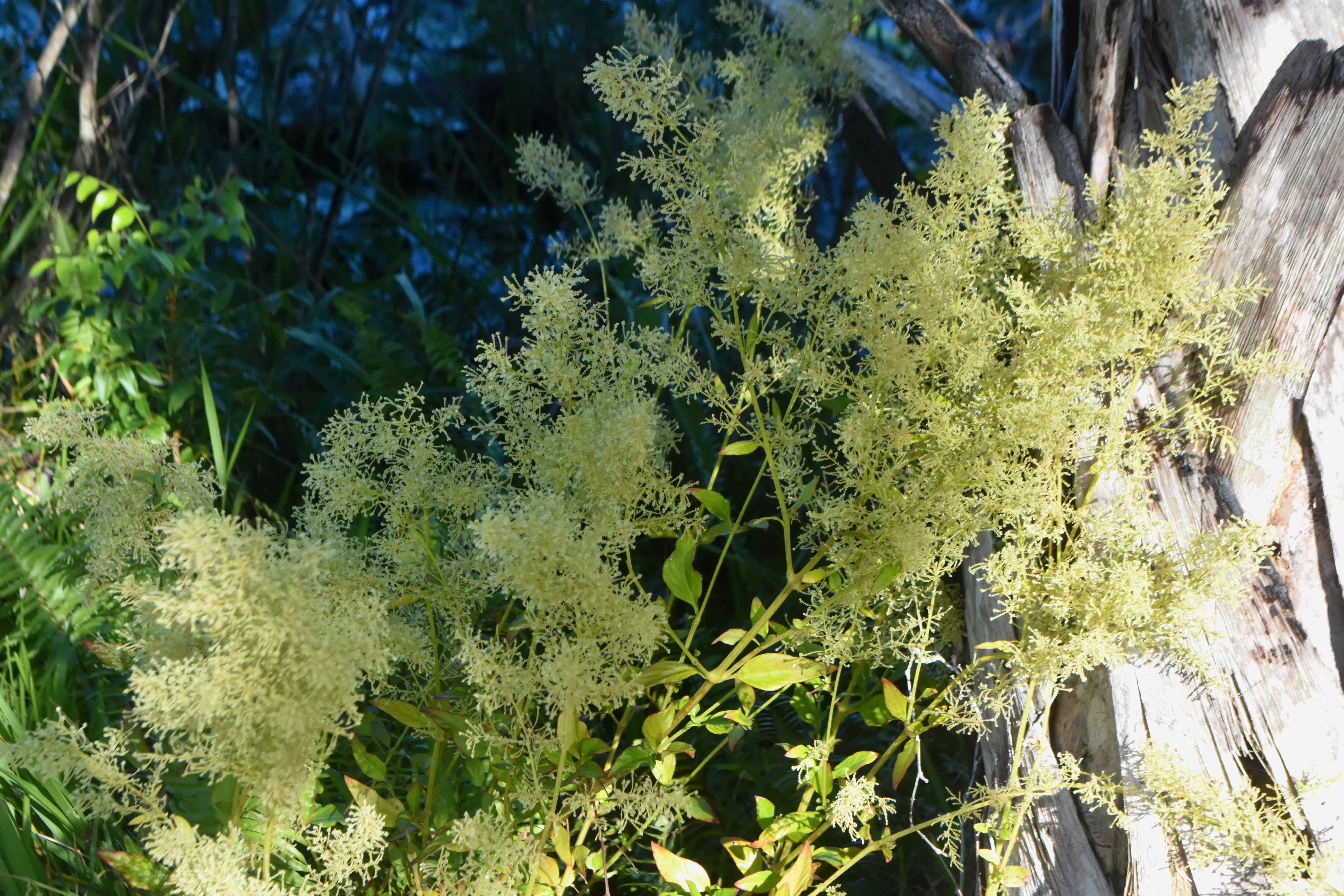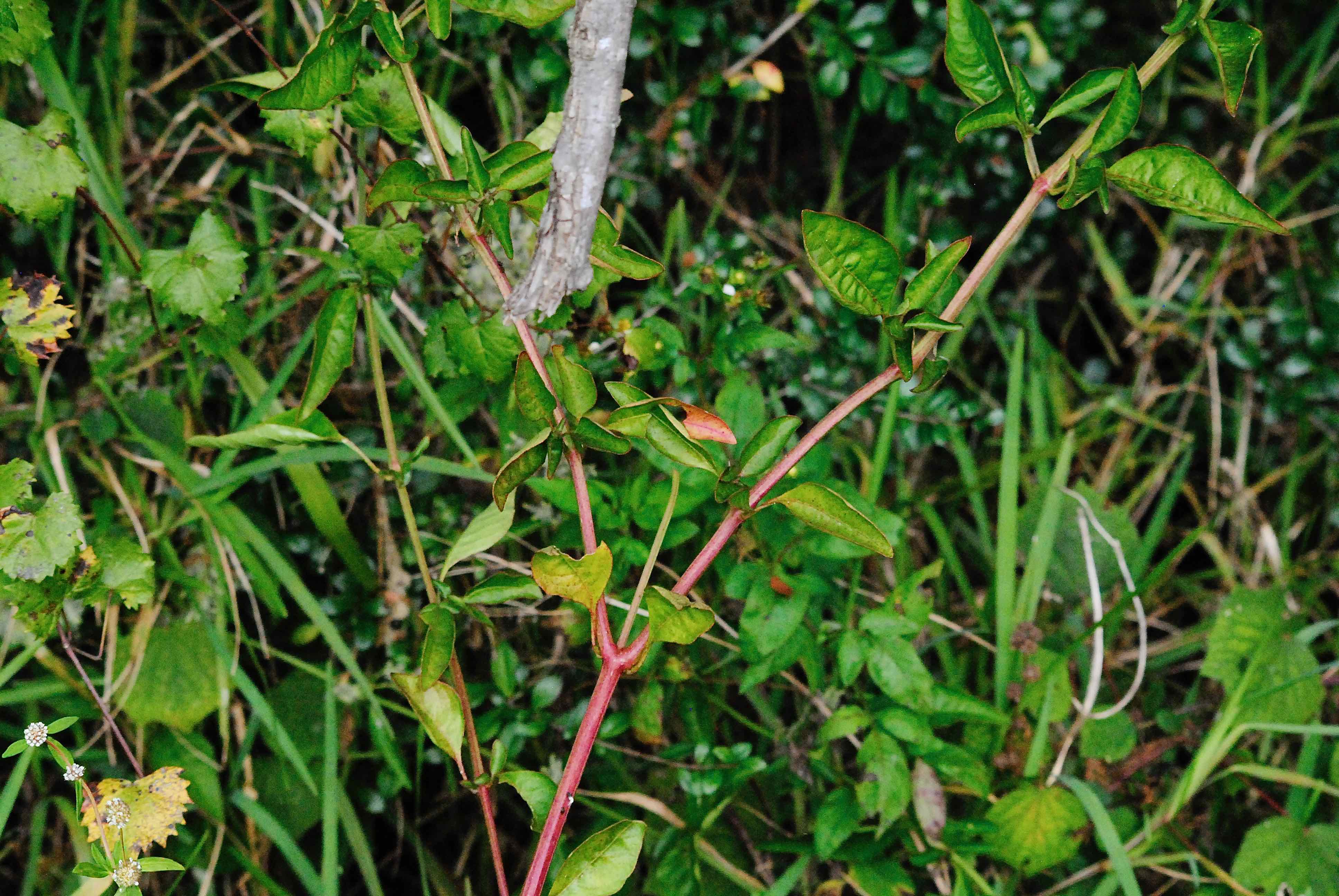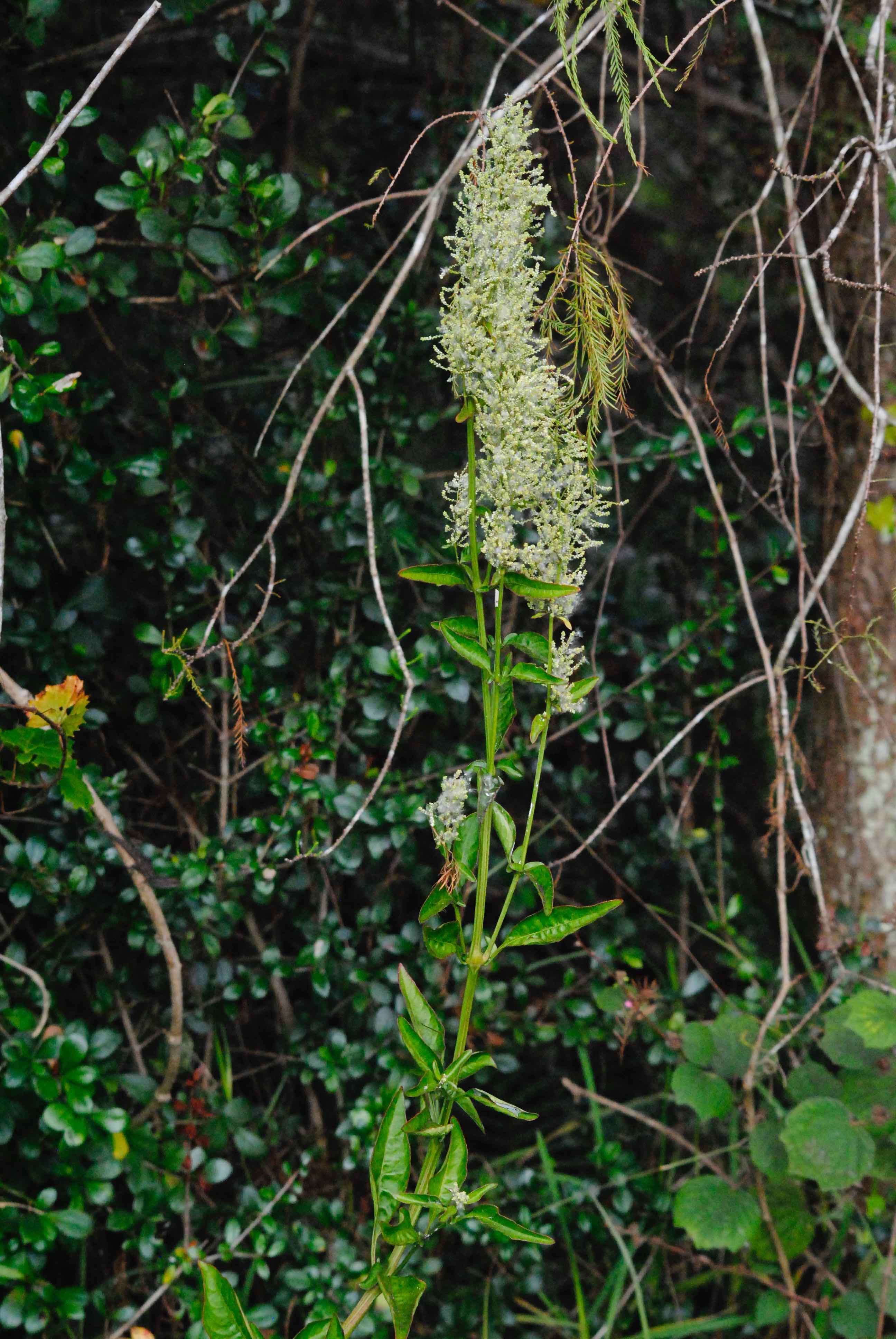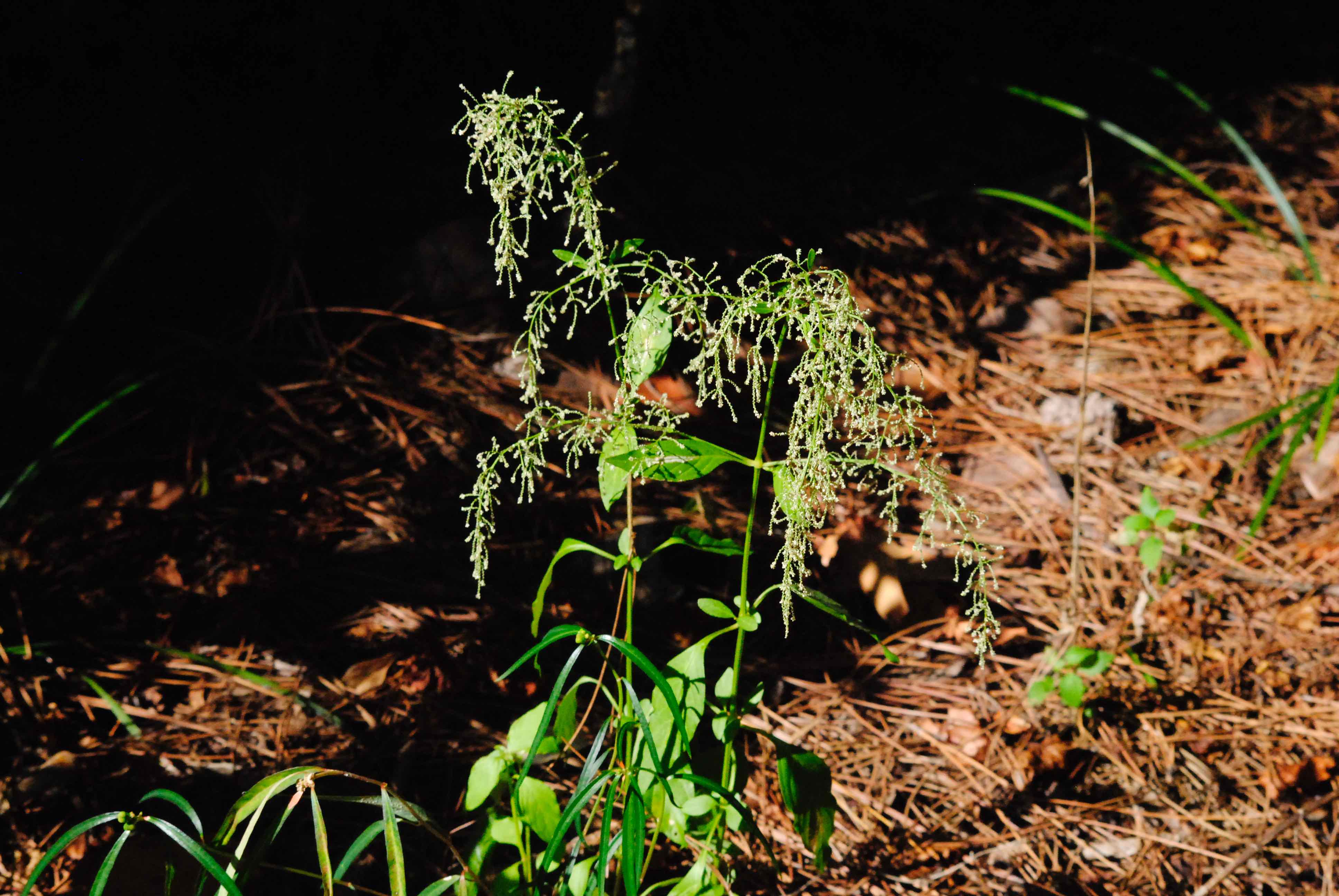
Juba's bush, photograhed at Loxahatchee National Wildlife Refuge, Boynton Beach, Palm Beach County, in November 2018.
So who is Juba, and why is this his bush? We've found two possibilities and we're certain of neither. Scientifically, Juba's bush is known as Iresine diffusa. The origin of a second common name, bloodleaf, is easily deduced from the plant's blood-red stem and red-tinged leaves.
So back to Juba. The first theory involves Juba II, king of Numidia who married Cleopatra Seline II, daughter of Cleopatra and Mark Anthony. Juba, besides doing his kingly duties, was a naturalist of note who wrote a book on spurges. However, Juba's bush is a native of the New World.
Theory No. 2: the name refers to an African dance that slaves brought with them to the Caribbean and the Amerian South during the 1500s and 1600s. The "dance" the plant makes when blown by the wind inspired the name. Either is plausable, but we'll give No. 2 a slight edge.
Regardless of the inspiration for its name, Juba's bush is a native of Florida, Louisiana and Texas as well as the Caribbean, Mexico, Central America and South America. It is found in most of Florida's Peninsula and in parts of the Panhandle.
It grows to two or three feet tall — the Lady Bird Johnson Wildflower Center says it can hit 10 feet — and usually is on the slender side. The leaves vaguely remind us of arrowhead vine but the edges can have a red tinge to them and the plant overall is much smaller. The flowers are small and white but come in large numbers atop a spike. They bloom year-round.
Juba's bush is a perennial but a short-lived one. It's found in hammocks. It is used in landscaping, but usually for restorations and natural settings, and is grown from seed or cuttings.
It is the host of the Hayhurst scallopwing butterfly.
Various native peoples, including the Catawba and Houma, used Juba's bush to treat various lung conditions, including whooping cough. They made a syrup from the leaves and stock. In fact Juba's bush was once known as l'herbe a croupe. In Colombia, it's still sold as a cough medicine.
According to the Journal of Ethnobiology and Ethnomedicine, Juba's bush is used in Northern Peru to treat inflammation of the ovaries and menstruation symptoms in adolescents. However, little, if any scientific research has been done on the medicinal value of the plant.
For those with allergy problems, Juba's bush is considered a moderate source of pollen.
Juba's bush is a member of Amaranthaceae, the amaranth family. Note: Our guy has a cousin found north of here, Iresine paniculata, that is also called Juba's bush and bloodleaf. In fact, several members of Iresine are known commonly as bloodleaf, so check for the scientific name.
Click on photo for larger image
Links for Juba's Bush



